“We said there warn’t no home like a raft, after all. Other places do seem so cramped up and smothery, but a raft don’t. You feel mighty free and easy and comfortable on a raft.”
—from The Adventures of Huckleberry Finn by Mark Twain
words to inspire before you expire
“We said there warn’t no home like a raft, after all. Other places do seem so cramped up and smothery, but a raft don’t. You feel mighty free and easy and comfortable on a raft.”
—from The Adventures of Huckleberry Finn by Mark Twain
“The Karenins, husband and wife, continued living in the same house, met every day, but were complete strangers to one another. Alexey Alexandrovitch made it a rule to see his wife every day, so that the servants might have no grounds for suppositions, but avoided dining at home. Vronsky was never at Alexey Alexandrovitch’s house, but Anna saw him away from home, and her husband was aware of it.”
—from Anna Karenina by Leo Tolstoy
Welcome back, class.
The Lord of the Rings is a sequel. Sure, it’s the more important and more famous sequel, but it is built on the backbone of another story: The Hobbit. I agree with the makers of the 50-books list that The Lord of the Rings is a story you need to read before you die, but The Hobbit came first, and it belongs on the list for that reason alone—without it, there would be no Lord of the Rings. It also happens to be a great story, with interesting characters and an amazing plot, worth reading in its own right.
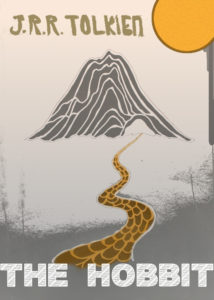 Unlike The Lord of the Rings, The Hobbit is a children’s novel—the story is simpler, with the same feel as The Wind in the Willows or Alice’s Adventures in Wonderland. But it doesn’t sacrifice the depth of Tolkien’s fantasy world by being kid-friendly; Middle-Earth is more extravagant and complete than Narnia, Neverland, and Oz combined. The only difference in The Hobbit is that it’s for all ages.
Unlike The Lord of the Rings, The Hobbit is a children’s novel—the story is simpler, with the same feel as The Wind in the Willows or Alice’s Adventures in Wonderland. But it doesn’t sacrifice the depth of Tolkien’s fantasy world by being kid-friendly; Middle-Earth is more extravagant and complete than Narnia, Neverland, and Oz combined. The only difference in The Hobbit is that it’s for all ages.
And despite this major difference, unsurprisingly, most of the themes and characters are the same in both books. Bilbo Baggins, Gandalf the Grey, and Gollum are the major characters that appear in both stories, and Bilbo obtaining the ring changes the fate of every character in The Lord of the Rings. I like to think that the books themselves mirror one of the novels’ major themes, that the smallest creature or character can change the world—The Lord of the Rings wouldn’t have been possible without the efforts of this one little children’s book.

Author J. R. R. Tolkien
Tolkien also contrasts the spirit of adventure with the longing for home in both stories. Bilbo’s adventure to save the dwarves’ home, his fear of going on an adventure at all, his delight at the comforts of home and his desire to return . . . Tolkien captures it beautifully. It’s early writers like Tolkien, who sold universal themes like these with hobbits and dwarves—just like other authors who sold them with talking animals, magical portals, and villainous monsters—that made fantasy popular for children and adults.
Oh, a hand up in the back—you ask, why read The Hobbit at all if it’s exactly like The Lord of the Rings, but for kids? We’ve already read one, why read the other?
If you don’t like reading, fine, don’t read The Hobbit. But if you enjoyed The Lord of the Rings and haven’t read The Hobbit, it’s certainly worth trying! And even though they are remarkably similar—like any two books written by the same author—these aren’t the same story. There are plenty of new characters, interesting and suspenseful situations, more witty and cheesy dialogue, all wrapped up by an exciting and heartfelt adventure. I wouldn’t say it’s better than The Lord of the Rings, but it’s definitely just as good.
It’s also easier and shorter.
Like I mentioned last week, I’m reading To Kill a Mockingbird now. It’ll be book #25!!
Until then, have an excellent week.
Prof. Jeffrey
Hello again, class.
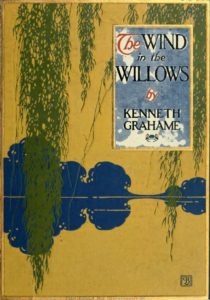 The Wind in the Willows is one of the most pleasant stories I’ve read in a long time. It’s short and entertaining, full of talking animals on crazy adventures, and never shallow enough to lose suspension of disbelief. More importantly, it’s a children’s story—easily what a parent would read to their children every night, which means unlike most novels on the 50-books list, this actually is something everyone should (and could) read.
The Wind in the Willows is one of the most pleasant stories I’ve read in a long time. It’s short and entertaining, full of talking animals on crazy adventures, and never shallow enough to lose suspension of disbelief. More importantly, it’s a children’s story—easily what a parent would read to their children every night, which means unlike most novels on the 50-books list, this actually is something everyone should (and could) read.
The story follows four animal characters, who each live on or around a great river: the Mole, the Water Rat, the Toad, and the Badger. Their stories intersect mildly, as the Mole adventurously abandons his home or the Toad tries desperately to return to his own, and the characters gather together at the end to wrap up the plot. It’s funny and sweet.
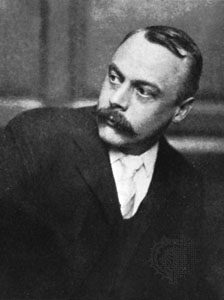
Author Kenneth Grahame
I don’t think the story and characters would be all that special, though, if it wasn’t for Kenneth Grahame’s writing. He adapted the bedtime stories he would tell his son into this novel, and because of that, he made it meaningful. Grahame balanced the animal-instinct for adventure with the desire for the comforts of home; he harnessed the distinctions between creatures and embraced those differences; and he portrayed the simple elements of nature with the same depth and complexity as the world of humanity can be perceived—at least by a child. His care for this story made it beautiful, and that’s why it makes the list.
Everything seems to have a dream-like quality as well, and that’s no mistake—the word “dream” is used obnoxiously often. Apart from a few main story arcs, most of the chapters feel like individual short stories, jumping between random plot points like a dream would. The talking animals, the exciting adventures, the beautifully comforting language . . . The Wind in the Willows is a childhood dream brought to life.
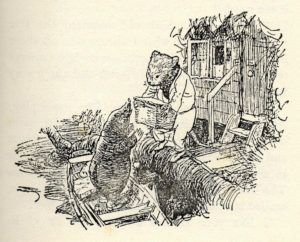 I do still question it’s inclusion on the list. The excellent writing and the portrayal of a child’s fantasy dreamworld is already on the list—Alice’s Adventures in Wonderland. Lewis Carroll’s classic is also much more popular and more fantasy-heavy than The Wind in the Willows, so why include Grahame’s novel at all? If we needed another children’s fantasy, we could have also included The Hobbit or Peter Pan . . . why The Wind in the Willows?
I do still question it’s inclusion on the list. The excellent writing and the portrayal of a child’s fantasy dreamworld is already on the list—Alice’s Adventures in Wonderland. Lewis Carroll’s classic is also much more popular and more fantasy-heavy than The Wind in the Willows, so why include Grahame’s novel at all? If we needed another children’s fantasy, we could have also included The Hobbit or Peter Pan . . . why The Wind in the Willows?
I don’t have much of an answer. It’s not that The Wind in the Willows is bad, but there are plenty of books missing from this list. Any one of them could have replaced this one. In any case, this would only be a concern if we were ranking the books on this list, and since that’s not what the list is about, I encourage you all to give this story a go.
I’m reading Harper Lee’s To Kill a Mockingbird next—for my book #25! Halfway there! And there’s no better book to wrap up the first half of my blog with.
Until next time!
Prof. Jeffrey
“‘And you, you will come too, young brother; for the days pass, and never return, and the South still waits for you. Take the Adventure, heed the call, now ere the irrevocable moment passes! ‘Tis but a banging of the door behind you, a blithesome step forward, and you are out of the old life and into the new! Then some day, some day long hence, jog home here if you will, when the cup has been drained and the play has been played, and sit down by your quiet river with a store of goodly memories for company.'”
—from The Wind in the Willows by Kenneth Grahame
“As he hurried along, eagerly anticipating the moment when he would be at home again among the things he knew and liked, the Mole saw clearly that he was an animal of tilled field and hedge-row, linked to the ploughed furrow, the frequented pasture, the lane of evening lingerings, the cultivated garden-plot. For others the asperities, the stubborn endurance, or the clash of actual conflict, that went with Nature in the rough; he must be wise, must keep to the pleasant places in which his lines were laid and which held adventure enough, in their way, to last for a lifetime.”
—from The Wind in the Willows by Kenneth Grahame
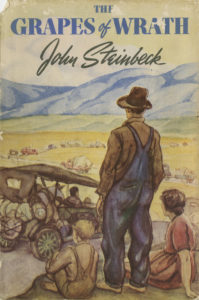
The Grapes of Wrath Book Cover
Welcome back, class.
The Grapes of Wrath is not a popular book. Very few people I know like it—it’s just too weird. The story is interrupted by short, confusing chapters that have nothing to do with the main characters. Steinbeck’s writing style has this odd repetition to it, which easily annoys anyone already confused. The ending is anticlimactic, detached, morbid, and vague. I have no solution for these issues, because they are issues of taste. If you have to read it, get over it.
If you can do that, what you’ll find is a powerful, moving portrayal of the Great Depression and the Dust Bowl. In my opinion, that’s the reason it made the list.
While I hated The Grapes of Wrath in high school (it lost me as early as the third chapter), the reread showed me two reasons to appreciate it—its connections to The Odyssey, and its carefully created characters.
Apparently, remaking The Odyssey is a common practice in literature. The journey home, the monsters and obstacles on the way, the gods dooming the quest…there are so many ways to adapt the fundamental story, and Steinbeck holds very little back adapting it here. Our hero is Tom Joad, skilled in all ways of contending, recently released from prison. He and his family load up the truck and head west, in search of a new home.
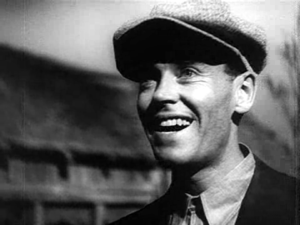
Henry Fonda as Tom Joad in The Grapes of Wrath (1940)
The adaptations of each Odyssean episode are fun to pick out (fun being a relative term). The immature man selling parts, mumbling about his dire situation and his missing eye, is the Cyclops trying to trap the Joad family in his childish pessimism. Another character, complaining about what the country’s coming to, is one of the sirens—Tom says he’s just “singing a kind of song,” and doing nothing about it. Their new home, California, is ripe with dangers like cops trying to push them out and other wanderers taking what scarce employment remains, just like the suitors Odysseus faces when he finally makes it home to Ithaca.
But Steinbeck doesn’t just recycle The Odyssey. The Grapes of Wrath is also an anti-Odyssey, which makes it just as interesting to find connections. Poseidon, god of the sea, tried to destroy Odysseus, but the Joad family faces the Dust Bowl—there is no sea, no water, no replenishment for the Joads. The search for home is just as twisted—the Joads had a home, and they were kicked out. They spend the last half of the novel looking for work, not home. Odysseus’ reunion with his family is mocked here, as the Joad family slowly falls apart from the strain of the quest. The ambiguous ending either supports the Joad’s strength to carry on, or shows a family blown apart by the hardships of 1930s America. This is not the same journey Odysseus faced.
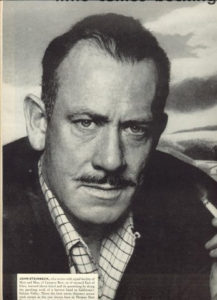
John Steinbeck
The story works without noticing the Odyssey connections as well (it’s less fun, but it works), all because of Steinbeck’s realism with the characters. Tom’s grandparents bicker and fumble around like any loving couple would, but are never stereotypes. The children, Ruthie and Winfield, see the world as only children would—they reveal family secrets out of pride for knowing them, make fun of their uncle’s alcoholism by pretending to be drunk, and can’t understand death except as the absence of a person they loved.
Without a doubt, the core relationship in the novel is between Tom and his mother. She is the matriarch keeping the family together, and he is her strength. She’s always loved how he copes with the world, and he is beyond her understanding, but he always comes back. Tom loves her like any son would, and as much as the world pulls him away, she anchors him to what matters. Their final scene finally breaks the family’s quest, and whether or not the Joad family has truly found home is up to the reader to decide.
The Grapes of Wrath is hard to read, and I don’t recommend it for high school students—it’s too confusing, even for adults. But if you have help, reading this book can reveal 1930s American life with stark clarity. It’s messages make sense today, as we face the same sociopolitical problems—homelessness, class discrimination, police brutality, racism, and the flaws of capitalism. It’s a novel worth studying.
In the spirit of the holidays, I’ll get scrooged and read A Christmas Carol by Charles Dickens next. Have a good week!
Prof. Jeffrey
© 2025 50 Books to Read Before You Die
Theme by Anders Noren — Up ↑
Recent Comments